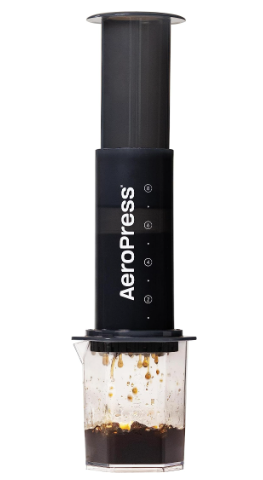Vacuum Coffee Brewing: Gimmick or Game-Changer?
METHODS
10/5/20255 min read


Understanding Vacuum Coffee Brewing
Vacuum coffee brewing, often referred to as siphon brewing, is an intricate and visually captivating method for brewing coffee that highlights the science of coffee extraction. This technique involves the use of a vacuum pot, which consists of two chambers, allowing for a unique brewing experience. At its core, the process is driven by vapor pressure and vacuum, which play critical roles in the brewing cycle.
The mechanics of the vacuum pot start with water being heated in the lower chamber. This heating causes the water to boil, producing steam and creating vapor pressure that forces the water upward to the upper chamber where the coffee grounds are located. As the hot water meets the coffee, it begins to extract oils and flavors, resulting in a rich and aromatic brew. Once the heat source is removed, the vapor pressure decreases, creating a vacuum effect that pulls the brewed coffee back down into the lower chamber, leaving the spent grounds behind.
To embark on vacuum coffee brewing, one will need a few essential ingredients and equipment. Primarily, high-quality coffee beans, ideally freshly ground for optimal flavor, are necessary. Additionally, clean, filtered water is essential for brewing the best cup of coffee. The setup typically includes a vacuum coffee maker or siphon brewer, a heat source, and a stirring implement. Various types of vacuum brewers are available, including models made from glass, stainless steel, or even plastic, catering to different preferences and aesthetics. Each brewer may offer unique features, such as built-in filters or additional temperature controls, enhancing the brewing experience.
Ultimately, vacuum coffee brewing sets itself apart from other methods through its scientific approach and the aesthetic pleasure it provides, making it an intriguing option for both avid coffee enthusiasts and casual drinkers alike.
Taste Profile: Is It Worth the Hype?
Vacuum coffee brewing, often referred to as siphon brewing, has created a unique niche within the world of coffee preparation. One of the main reasons coffee enthusiasts flock to this brewing method is the distinctive flavor profile it produces. The technique involves a combination of precise control over brewing variables, such as water temperature, grind size, and the selection of coffee beans, leading to a nuanced sensory experience that sets it apart from traditional methods like drip brewing or French press.
The vacuum brewing process is particularly effective in extracting oils and other fine compounds from the coffee grounds, resulting in a rich and aromatic cup. Notably, the physics behind its operation utilizes vapor pressure and a unique two-chamber design that can highlight the complex flavors in well-sourced coffee beans. Many coffee aficionados argue that this method enhances the sweetness and clarity of flavors, ultimately leading to a sophisticated tasting experience.
Expert opinions in the coffee community often highlight that the selection of coffee beans plays a crucial role in the taste profile achieved through vacuum brewing. Beans with distinct flavor notes, such as fruitiness or floral tones, flourish when exposed to the precise conditions provided by this method. However, it is also essential to consider grind size and water temperature, as inconsistencies in these areas can lead to either over-extraction or under-extraction, impacting the overall taste adversely.
Testimonials from users suggest that those who invest in a vacuum coffee brewer often experience a significant improvement in the coffee's aromatic qualities, which can make this method worthwhile. While some may view it as a gimmick, many agree that the artful process of vacuum brewing contributes positively to the flavor complexity of the final product, making it a compelling choice for serious coffee drinkers seeking to elevate their brewing practices.
The Experience of Brewing Coffee with a Vacuum Pot
Brewing coffee with a vacuum pot is often seen as an art form rather than a mere procedure, transforming the preparation of this beloved beverage into an engaging visual spectacle. The process unfolds in several phases, each contributing its unique charm, drawing enthusiasts and curious observers alike. To commence, water is boiled in the lower chamber while coffee grounds are measured out, usually in a ratio of one tablespoon for every six ounces of water. Once the water reaches an optimal temperature, it is displaced upwards into the upper chamber, a captivating moment that showcases the vacuum technology in action.
As the brewed coffee steeps, one enjoys a heightened sense of anticipation as delightful aromas waft through the air, immediately creating an inviting atmosphere. The beauty of this method lies not just in its design but also in the intricate nature of the brewing process; it requires one to engage with each step mindfully. A gentle stir is often recommended to ensure even extraction of the coffee grounds, further enriching the flavors. After the brewing is complete, a simple act of removing the upper chamber allows gravity to take over, releasing a stream of vibrant coffee into the lower chamber.
While the visual enjoyment of the vacuum pot is undeniable, it is essential to recognize the learning curve that accompanies this brewing technique. Users often share their adventures with trial and error, discovering the various adjustments necessary to perfect their unique cup of coffee. Factors such as grind size, water temperature, and steeping time play critical roles in achieving the ideal brew. Over time, many find that mastering this method transforms their coffee-making ritual into a more involved and satisfying experience. Ultimately, brewing with a vacuum pot not only enhances the sensory enjoyment of coffee but also deepens one’s appreciation for the craft itself.
Vacuum Brewing: Pros, Cons, and Conclusion
Vacuum coffee brewing, also known as siphon brewing, has garnered interest within the coffee community for its unique approach and distinctive outcomes. This method utilizes a vacuum pot that creates a mesmerizing brewing experience, appealing to both coffee enthusiasts and casual drinkers alike. However, like any brewing technique, it presents both advantages and disadvantages worth considering.
One of the primary advantages of vacuum brewing is the ability to produce exceptional flavors. This method allows for a full extraction of oils and aromas from the coffee, often resulting in a complex profile that can highlight different flavor notes. Additionally, the theatrical presentation of the brewing process is undeniably captivating, making it a fantastic choice for gatherings or showcases. The artistic aspect of crafting coffee in a vacuum pot also attracts those who enjoy a hands-on approach to their brewing routine, enhancing the overall coffee experience.
On the other hand, vacuum brewing comes with its set of drawbacks. The complexity of the process can deter those who prefer a more straightforward method. Operating a vacuum pot requires careful attention to detail and precise timing, which may pose a challenge for some. Furthermore, the cost of the required equipment can be prohibitive for casual coffee drinkers. Maintaining and cleaning vacuum brewing devices can also be time-consuming, which might dissuade individuals with a busy lifestyle from adopting this technique.
Ultimately, vacuum coffee brewing may be best suited for enthusiasts and home baristas eager to explore the nuances of their coffee. For those who enjoy the ritual and artistry of brewing, this method can be a fulfilling addition to their coffee practices. In conclusion, while vacuum brewing has its complications and demands commitment, many find it to be a game-changer rather than merely a gimmick in the world of coffee. Assessing individual preferences and lifestyle needs is essential for determining if this method aligns with one’s coffee journey.
One of our most eco-friendly coffee makers..
AeroPressXL Coffee press


Click 'Shop Now!' to find on Amazon now....
Specs
The AeroPress XL is an upsized version of the original AeroPress coffee maker, designed to brew larger volumes while maintaining the core benefits of its unique immersion and pressure-based method. It holds about 20 fluid ounces (around 590 ml), allowing users to make up to two full cups of coffee or several espresso-style shots in one press. The device is made from BPA-free plastic, and it comes with a shatterproof Tritan carafe designed to handle the increased brew size. Its dimensions are roughly 4 inches in diameter by 10 inches tall, making it significantly larger than the standard model. The brewing method combines immersion, aeration, and micro-filtration, delivering a smooth, low-acidity cup of coffee. The kit includes 100 XL-specific micro filters, a scoop, stirrer, and the custom carafe.
Pros and Cons
Pros
One of the biggest advantages of the AeroPress XL is its increased capacity. If you’re someone who often makes coffee for two or more people, or simply wants more in one go, this model saves time and effort compared to repeating brews with the original. It still delivers a clean, rich cup thanks to its fine paper filters and pressure-based brewing. The unit is lightweight yet durable, making it suitable for home or travel, and cleaning is straightforward—grounds eject cleanly and parts rinse off easily. You also retain control over brew time, temperature, and grind size, which makes it great for dialing in your personal taste preferences.
Cons
However, its larger size does come with drawbacks. The brewer is taller and bulkier, which may not suit small kitchens or tight travel setups. It also uses different filters than the original AeroPress, meaning you can’t interchange accessories or use third-party options built for the standard model. Handling the increased hot water volume requires more care, especially when pressing, as the unit can become top-heavy and harder to stabilize. The included carafe, while functional, lacks a handle, making pouring less ergonomic, particularly when it's full. Also, the overall design may feel less portable than what AeroPress fans are used to.
Our Review
The AeroPress XL successfully brings the beloved brewing qualities of the original to a larger format, and it does so without compromising on taste. We found the coffee produced to be consistently smooth, aromatic, and free of the bitterness or grit you might get with French press or other manual methods. The extra capacity makes it ideal for households, office use, or anyone who wants more than just a single cup. It still brews fast, with most cups done in under two minutes, and the cleanup remains one of the easiest among manual brewers.
That said, the bigger size changes the user experience slightly. It takes more counter space, the plunger needs firmer pressure to push through more liquid, and you have to be a bit more cautious with setup—especially if you use the inverted method. The separate filter size also means you'll need to plan for ongoing supply. And while the carafe is a nice inclusion, its lack of handle makes pouring awkward, especially with hot liquids.
In short, the AeroPress XL is a great step up for regular AeroPress users who want more coffee per press without sacrificing the quality and convenience they've come to expect. But for solo coffee drinkers or frequent travelers, the original model or AeroPress Go may still be the better fit.
